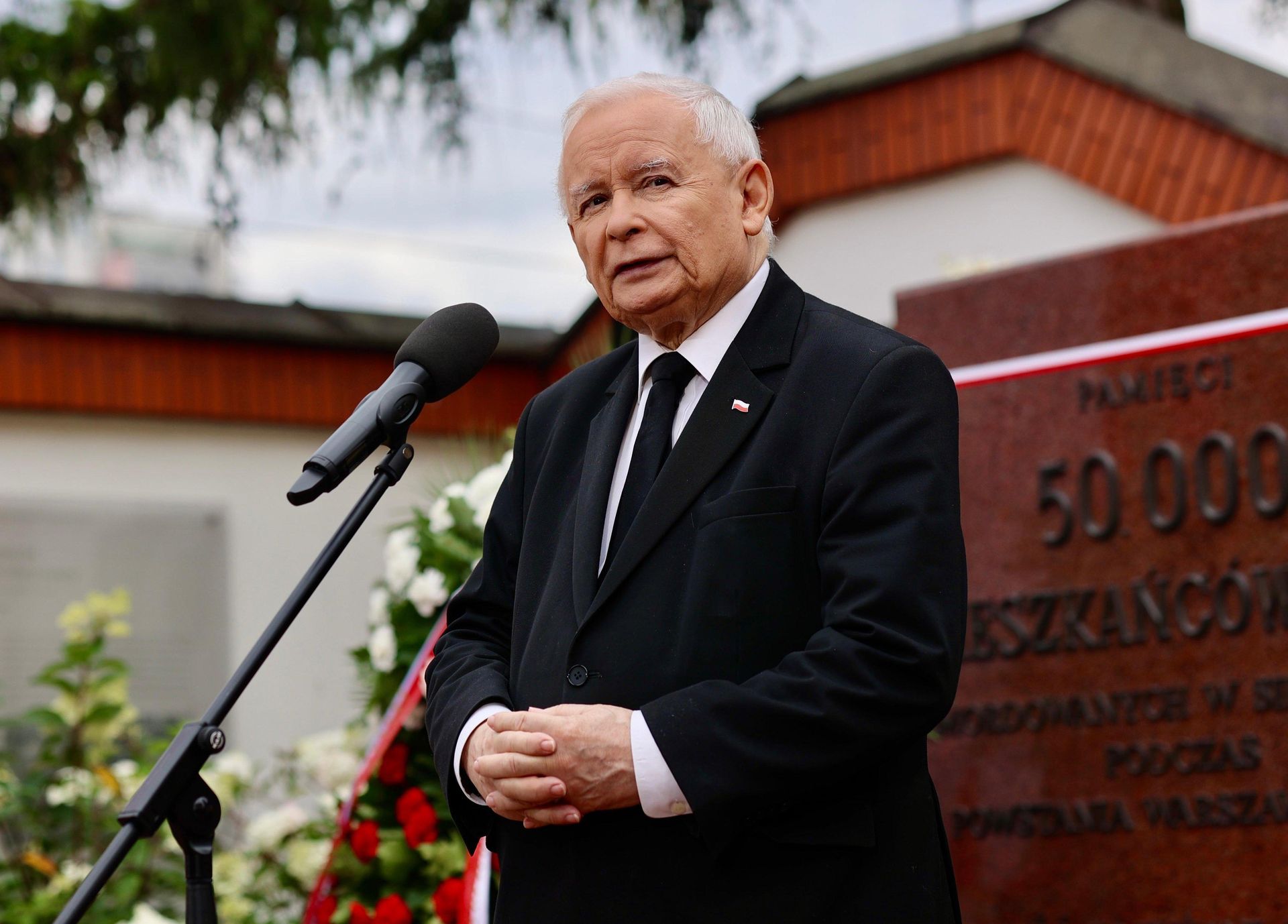
In the realm of aerial warfare, where milliseconds can mean the difference between victory and defeat, speed remains the ultimate trump card.
While modern fighters boast stealth technology, advanced avionics, and precision weapons, there’s something primal about raw velocity that still captures the imagination!
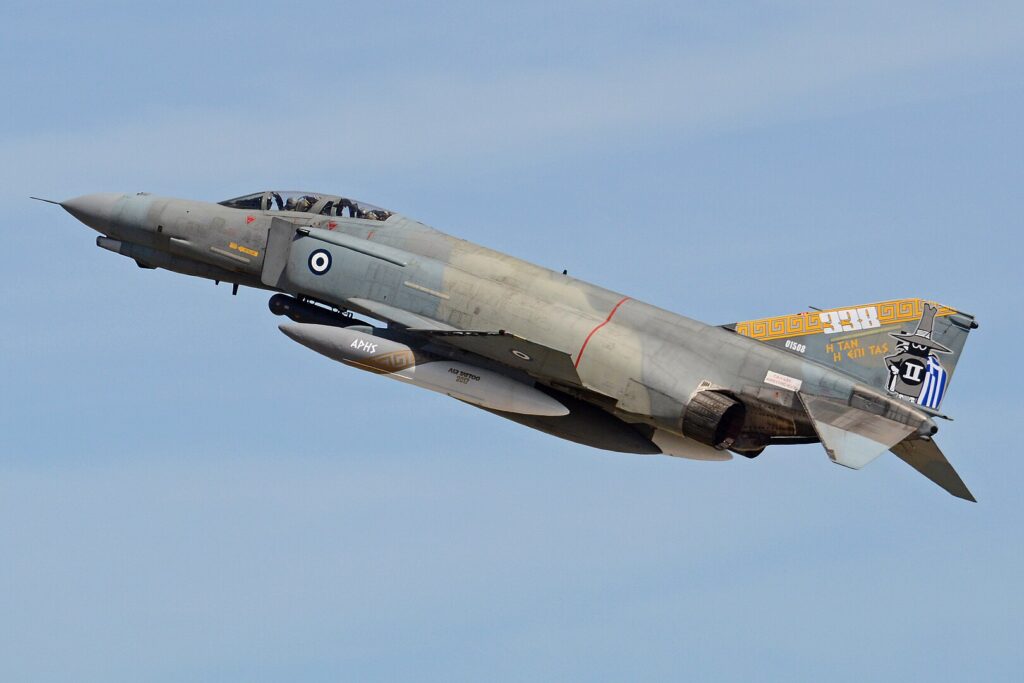 Photo: By Alan Wilson – McDonnell Douglas F-4E (AUP) Phantom II | Wikimedia Commons
Photo: By Alan Wilson – McDonnell Douglas F-4E (AUP) Phantom II | Wikimedia Commons10. McDonnell Douglas F-4 Phantom II
Maximum Speed: Mach 2.23 (2,370 kph / 1,470 mph)
The F-4 Phantom II stands as a testament to the engineering philosophy that if something looks wrong, it probably flies right. This Cold War workhorse, with its distinctive upward-angled wingtips and imposing twin-engine configuration, continues to serve with Turkey, Greece, and Iran.
What makes the Phantom remarkable isn’t just its longevity but its unconventional approach to aerodynamics. Powered by twin General Electric J79 engines, the F-4 embodies the aviation maxim that “with enough thrust, even a brick can fly.”
Originally designed without an internal gun, the Phantom reflected the 1960s belief that air-to-air missiles had rendered close-quarters dogfighting obsolete. However, combat experience in Vietnam proved otherwise, leading to modifications that allowed external gun pods to be mounted on any of its hardpoints.
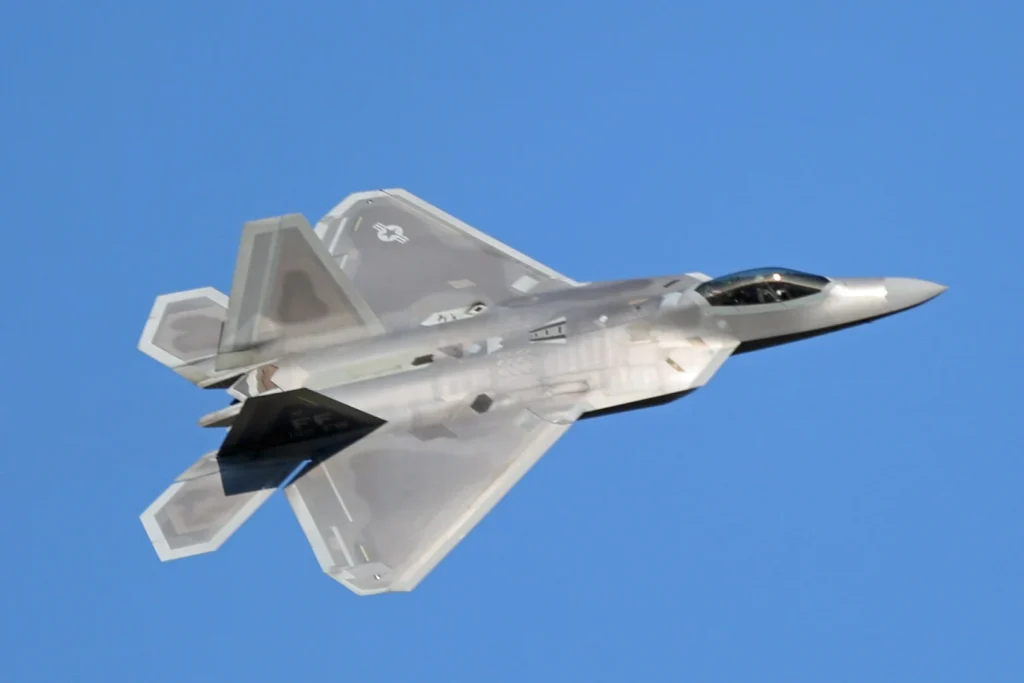 Photo: By wallycacsabre – F22-28, CC BY 2.0, https://commons.wikimedia.org/w/index.php?curid=41935694
Photo: By wallycacsabre – F22-28, CC BY 2.0, https://commons.wikimedia.org/w/index.php?curid=419356949. Lockheed Martin F-22 Raptor
Maximum Speed: Mach 2.25 (2,414 kph / 1,500 mph)
The F-22 Raptor represents a paradigm shift in fighter design, being the world’s first fifth-generation fighter aircraft. With fewer than 200 examples ever built and exclusively operated by the United States Air Force, the Raptor stands as perhaps the most exclusive fighter jet club in aviation history.
Unlike its older, faster counterparts that struggle to break the sound barrier at low altitudes, the F-22 maintains impressive performance across all flight regimes. It can achieve Mach 1.2 at sea level and, more impressively, sustain supersonic flight without afterburners—a capability known as supercruise.
The Raptor’s internal weapons bays ensure that its speed performance remains consistent whether clean or fully armed, eliminating the drag penalties that plague conventional fighters.
 IAI Kfir | Photo: By Roland Turner | Wikimedia Commons
IAI Kfir | Photo: By Roland Turner | Wikimedia Commons8. IAI Kfir
Maximum Speed: Mach 2.3 (2,440 kph / 1,520 mph)
The Israeli Aerospace Industries Kfir demonstrates how creative engineering can breathe new life into existing designs. Based on the French Dassault Mirage 5, the Kfir represents a comprehensive Israeli upgrade program that transformed a capable fighter into a speed demon through strategic improvements.
The heart of the Kfir’s enhanced performance lies in its powerplant swap. Replacing the original SNECMA Atar 9C engine with the more powerful General Electric J79-J1E turbojet, the same engine that powers the F-4 Phantom, provided the additional thrust necessary to achieve these impressive speeds.
Currently operated only by Colombia and the tactical training company ATAC, the Kfir’s limited service reflects both its specialised nature and the age of existing airframes.
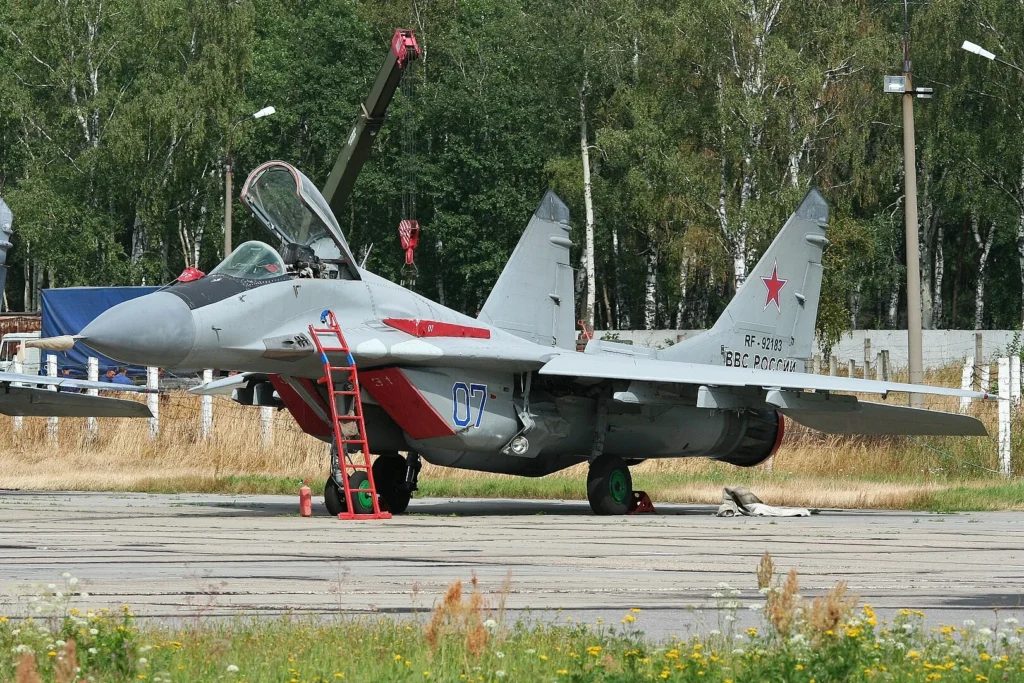 MiG-29 Fulcrum; Photo: Alan Wilson | Wikimedia Commons
MiG-29 Fulcrum; Photo: Alan Wilson | Wikimedia Commons7. Mikoyan MiG-29
Maximum Speed: Mach 2.3 (2,450 kph / 1,520 mph)
The MiG-29 Fulcrum emerged from Soviet design bureaus as a lighter, more agile counterpart to the heavy Su-27, directly challenging American fourth-generation fighters like the F-16.
Designed primarily as a point-defence interceptor, the MiG-29 prioritised speed and climb rate over range, reflecting Soviet tactical doctrine that emphasised rapid response to incoming threats. Its widely spaced twin engines not only provide the power necessary for impressive acceleration but also contribute to the aircraft’s legendary manoeuvrability, making it a formidable opponent in close-quarters air combat.
While capable of Mach 2.3 in clean configuration, the MiG-29 cannot achieve supersonic flight while carrying external fuel tanks, highlighting the compromise between speed and operational flexibility that defines many specialised interceptors.
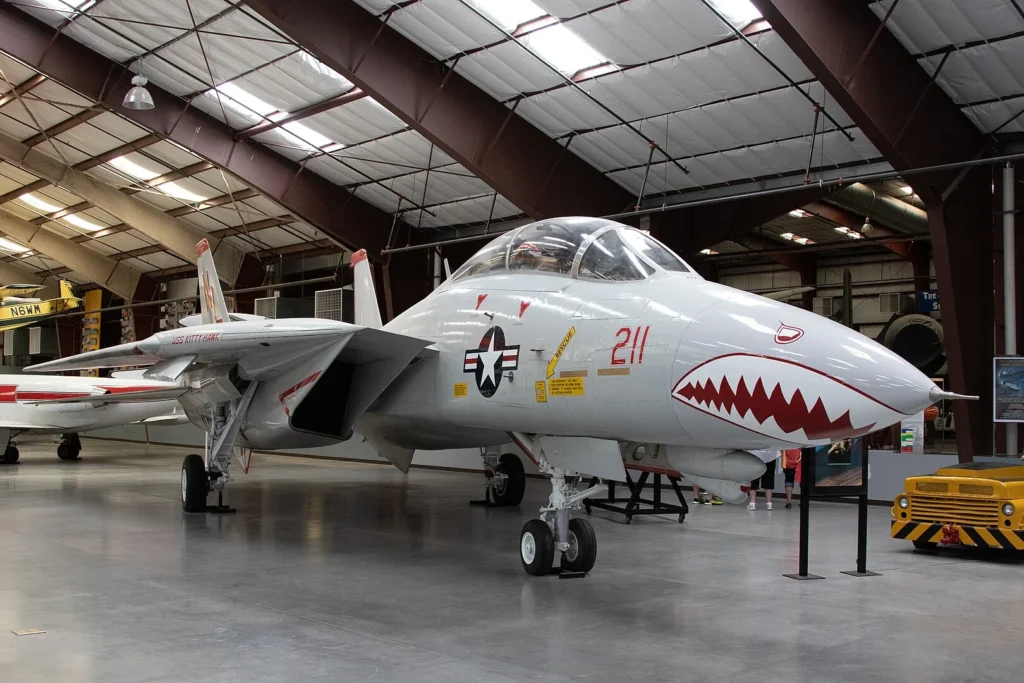 F-14 Tomcat | Photo: By Mike LaChance | Wikimedia Commons
F-14 Tomcat | Photo: By Mike LaChance | Wikimedia Commons6. Grumman F-14 Tomcat
Maximum Speed: Mach 2.3 (2,485 kph / 1,544 mph)
The F-14 Tomcat holds the distinction of being the world’s first fourth-generation fighter, introducing variable-sweep wing technology to carrier-based operations. Though retired by the U.S. Navy in favour of the more versatile F/A-18 Super Hornet, the Tomcat continues to serve with Iran’s air force.
What sets the Tomcat apart from many of its contemporaries is its ability to achieve advertised speeds even when fully loaded with weapons and fuel. Former Navy pilots regularly report reaching Mach 2.3 in operational configurations, with some suggesting that a clean F-14 could exceed Mach 2.5 if pushed to its limits.
The Tomcat’s combat record, particularly during the Iran-Iraq War, demonstrates the effectiveness of combining high speed with advanced radar and long-range weapons.
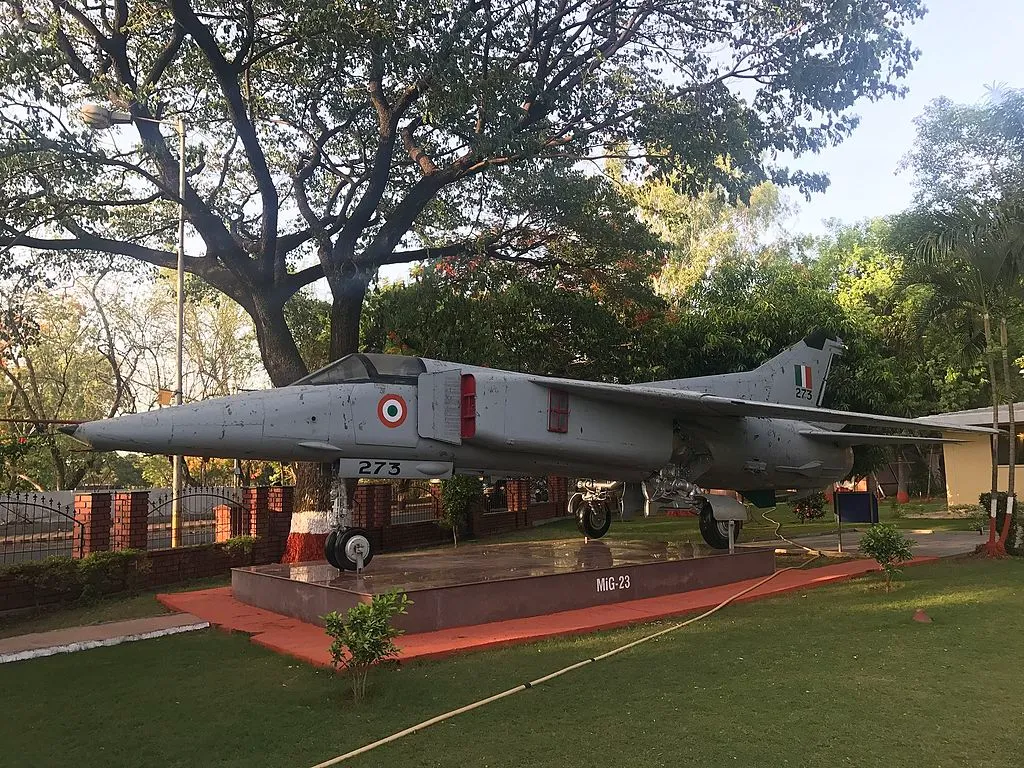 Mikoyan-Gurevich MiG-23; Photo- Wikipedia
Mikoyan-Gurevich MiG-23; Photo- Wikipedia5. Mikoyan-Gurevich MiG-23
Maximum Speed: Mach 2.35 (2,499 kph / 1,553 mph)
The MiG-23 Flogger represents Soviet attempts to create a versatile swing-wing fighter capable of operating from austere airfields while maintaining high-speed interception capabilities.
The variable-sweep wing configuration allows the MiG-23 to optimise its aerodynamic profile for different flight regimes, with wings swept forward for takeoff and landing performance, and swept back for high-speed flight.
While capable of impressive speeds at altitude, the aircraft suffers from poor low-altitude performance and limited manoeuvrability compared to later fourth-generation designs. These characteristics reflect its primary role as a bomber interceptor rather than a multi-role air superiority fighter.
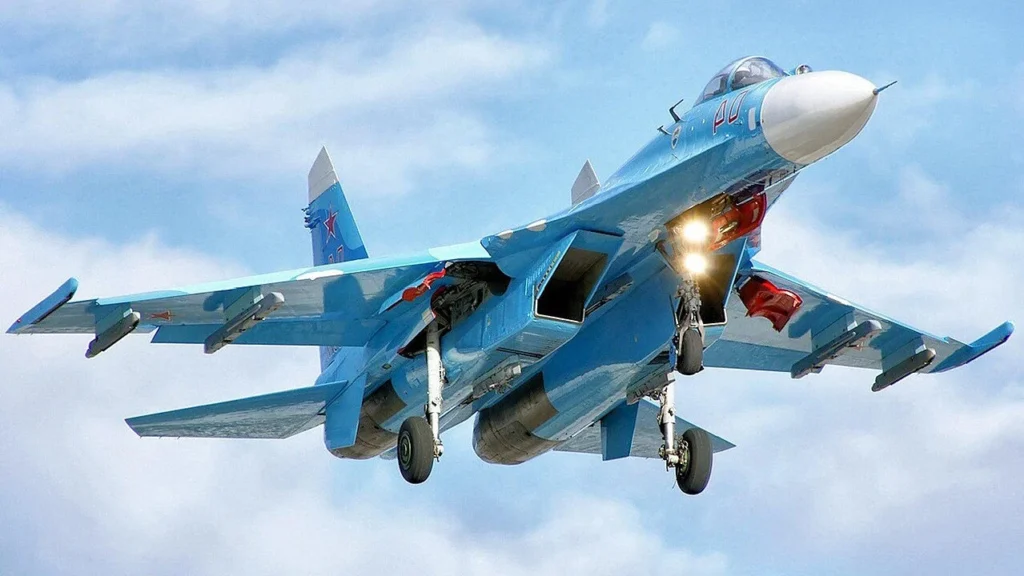 Su-27; Photo: By Moonhunterofindia | Wikimedia Commons
Su-27; Photo: By Moonhunterofindia | Wikimedia Commons4. Sukhoi Su-27
Maximum Speed: Mach 2.35 (2,500 kph / 1,600 mph)
The Sukhoi Su-27 spawned one of the most successful fighter aircraft families in aviation history, giving rise to variants including the Su-30, Su-34, Su-35, and Chinese derivatives like the J-11 and J-16.
Unlike dedicated interceptors that prioritise speed above all else, the Su-27 was designed as a multirole air superiority fighter, balancing speed with manoeuvrability, payload capacity, and operational flexibility.
The Su-27’s speed capabilities reflect its role as a long-range air superiority fighter rather than a point-defence interceptor. While capable of Mach 2.35 at altitude, the aircraft’s performance decreases significantly with external ordnance, and it cannot achieve the low-altitude supersonic speeds of some specialised interceptors.
 F-15 Eagle; Photo: By Steve Lynes from Sandshurst | Wikimedia Commons
F-15 Eagle; Photo: By Steve Lynes from Sandshurst | Wikimedia Commons3. McDonnell Douglas F-15 Eagle
Maximum Speed: Mach 2.5 (2,655 kph / 1,650 mph)
The F-15 Eagle stands as perhaps the most successful Western fighter design of the past half-century, combining impressive speed with exceptional manoeuvrability and an unmatched combat record.
Developed specifically as a response to the MiG-25 interceptor, the F-15 trades slightly lower top speed for significantly better low-altitude performance and air-to-air manoeuvring capability.
The F-15’s continued relevance is demonstrated by the ongoing production of the F-15EX Eagle II, which promises even better performance than its predecessors. Boeing officials suggest that a clean F-15EX could potentially achieve Mach 2.9, though practical considerations limit operational speeds to more modest figures.
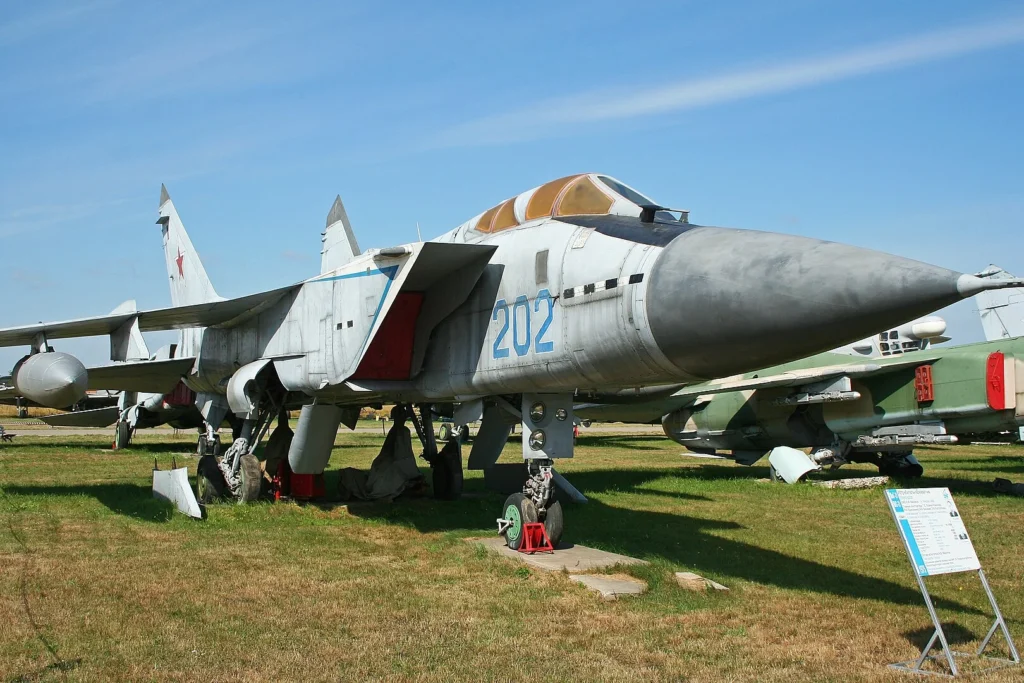 MiG-31; Photo: By Alan Wilson | Wikimedia Commons
MiG-31; Photo: By Alan Wilson | Wikimedia Commons2. Mikoyan MiG-31
Maximum Speed: Mach 2.83 (3,000 kph / 1,900 mph)
The MiG-31 Foxhound represents the pinnacle of Soviet interceptor development, building upon the MiG-25’s speed while adding improved sensors, electronics, and operational flexibility.
Originally designed as a more adaptable successor to the MiG-25, the MiG-31 was intended to fulfil multiple roles, including interception, reconnaissance, and even ground attack. While many of these variant proposals were ultimately cancelled, the development process resulted in an aircraft with significantly better low-altitude performance than its predecessor, capable of Mach 1.25 at sea level.
However, the MiG-31’s impressive speed capabilities face practical limitations in current service. Russian military officials have acknowledged that cockpit glass limitations restrict the aircraft to Mach 1.5 in operational service, well below its theoretical maximum.
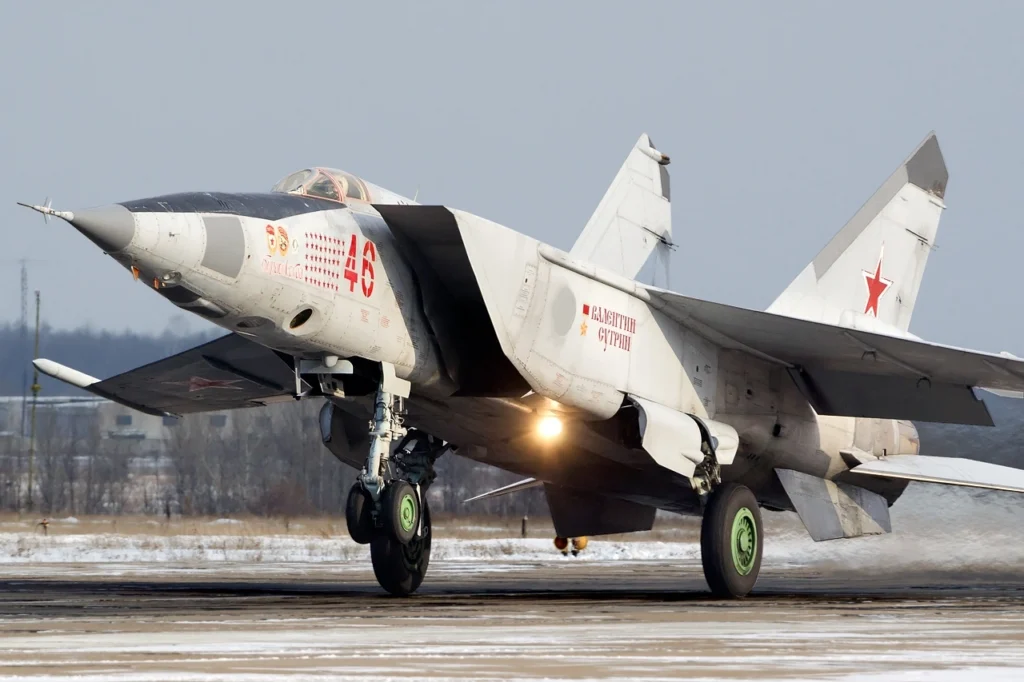 MiG-25; Photo: By Alex Beltyukov | Wikimedia Commons
MiG-25; Photo: By Alex Beltyukov | Wikimedia Commons1. Mikoyan-Gurevich MiG-25
Maximum Speed: Mach 2.83 (3,000 kph / 1,900 mph)
The MiG-25 Foxbat holds the distinction of being the fastest operational fighter aircraft ever built, though “operational” requires significant qualification.
Designed in the late 1960s as a high-altitude interceptor specifically to counter American high-speed reconnaissance aircraft and bombers, the MiG-25 achieved performance figures that sparked panic in Western intelligence circles. Its combination of speed and altitude capability forced the United States to accelerate development of the F-15 Eagle, fundamentally reshaping American fighter design philosophy.
The Foxbat’s impressive speed came at the cost of operational flexibility. Like many specialised interceptors, it suffered from poor low-altitude performance and limited manoeuvrability, making it unsuitable for the air-to-air combat scenarios that would define later conflicts.
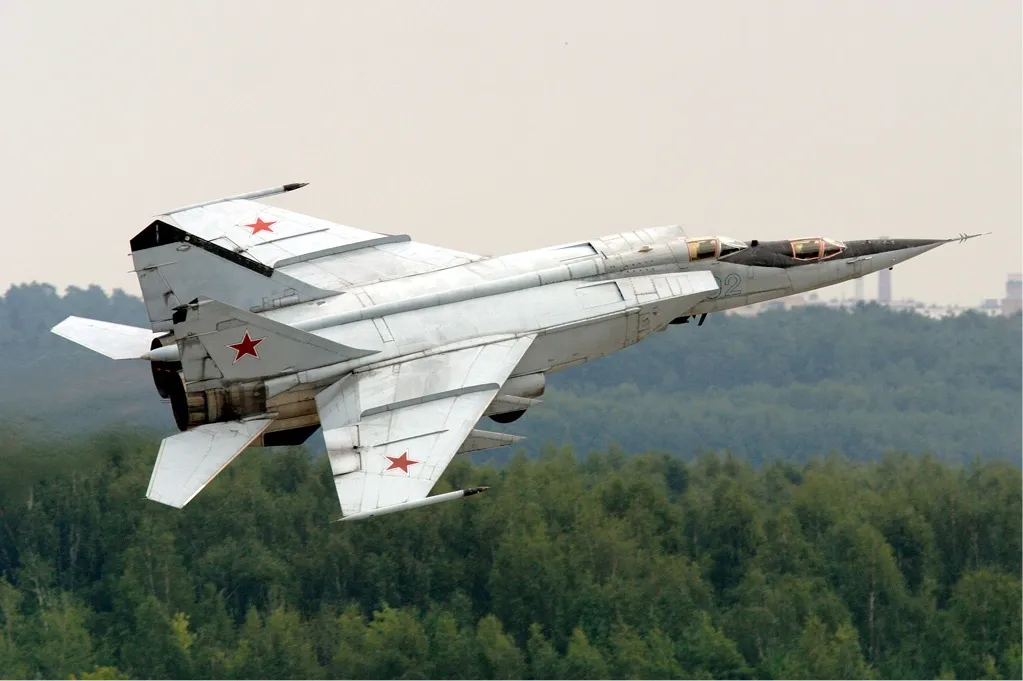 MiG-25 Foxbat; Photo- Wikipedia
MiG-25 Foxbat; Photo- WikipediaBottom Line
The observant reader will notice that most entries on this list represent designs from the Cold War era, when speed was considered the ultimate measure of fighter capability.
Modern fighter development has largely abandoned the pursuit of maximum speed in favour of stealth, sensors, manoeuvrability, and operational flexibility.
Studies indicate that fighters rarely exceed Mach 1.2 during actual combat, making the extreme speeds of these interceptors more relevant for bragging rights than battlefield effectiveness.
Even forthcoming sixth-generation fighters are projected to have maximum speeds in the Mach 2.2-2.5 range, prioritising other capabilities over pure velocity. In the modern aerial arena, it seems that while speed kills, stealth, sensors, and smart weapons kill more efficiently, though they’re considerably less impressive at air shows.
Stay tuned with us. Further, follow us on social media for the latest updates.
Join us on Telegram Group for the Latest Aviation Updates. Subsequently, follow us on Google News
Top 10 Fastest Military Aircraft in the World, No.1s Speed Will Surprise You
The post The Top 10 Fastest Fighter Jets in the World Currently Flying appeared first on Aviation A2Z.










